What Do I Do About Pale Gums In Dogs?
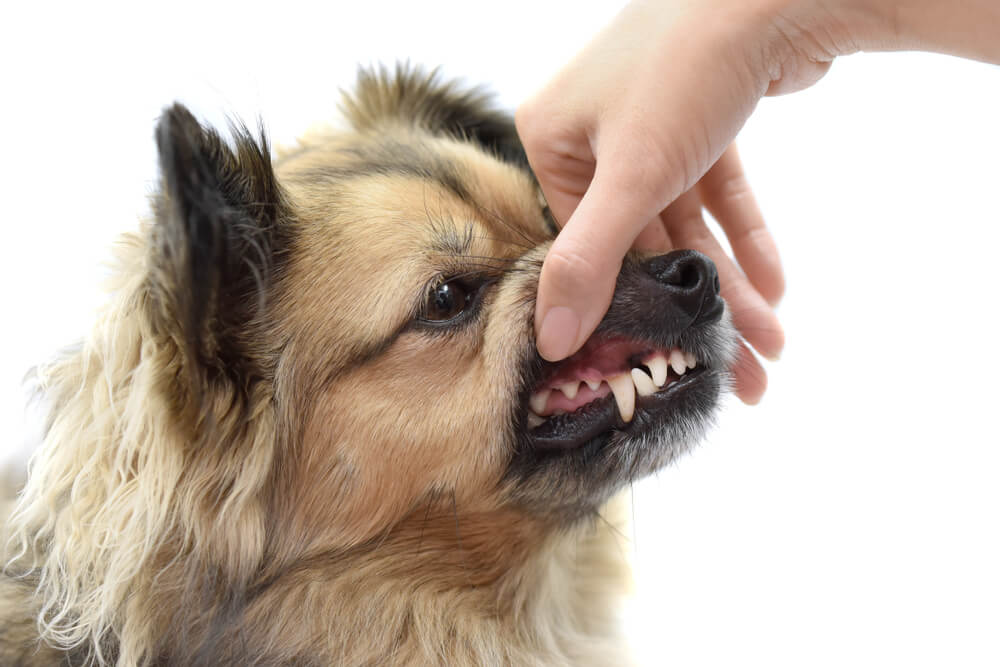
Table of Contents
Listen To The Article
Introduction to What Do I Do About Pale Gums In Dogs?
The gums of the teeth of your dog are usually pink.
However, if you inspect them carefully, you may see that they are slightly paler than the surrounding skin.
This is a normal occurrence that occurs during the growth of your dog’s teeth.
However, if you see that the gums are not pink as previously described, it means that they are pale.
It is also a sign that your dog is suffering from dental disease.
The first signs of gum disease in dogs will be pale gums.
Bad breath from gum disease is another symptom of gum disease in dogs.
When your dog has bad breath it may be a sign of tooth decay, gum disease, or a tooth getting ready to fall out.
When a dog has a toothache he will drool and favor the side with the painful tooth.
If you notice your dog has bad breath and his gums are pale, investigate the cause of the bad breath and the pale gums.
Dogs with pale gums can be a sign of Vitamin C deficiency.
The gums take their color from the amount of hemoglobin present in the blood vessels in the gums.
If Vitamin C is low, the gums can turn pale and the pet can start experiencing health issues.
The recommended daily allowance for dogs is 10mg of Vitamin C.
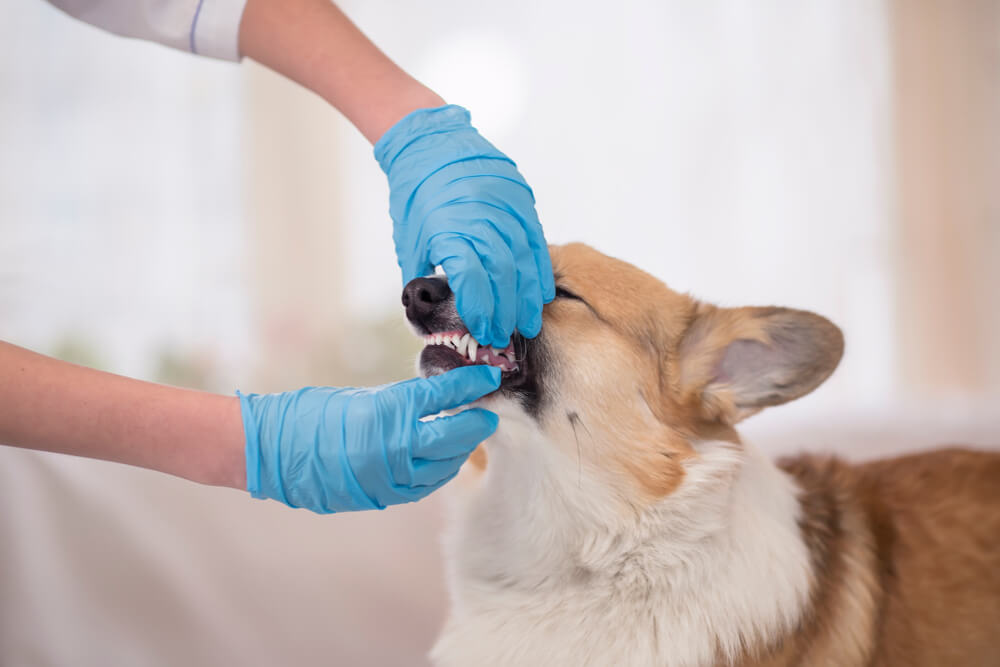
What Colour Should Dogs’ Gums Be?
The color of your dog’s gums says a lot about their health and any changes could be a sign that something is wrong.
The color of healthy dog gums varies from dog to dog, but they should generally be a bubble-gum pink or salmon color.
Some dogs have naturally mottled gums which aren’t anything to worry about.
However, if your dog’s gum color has changed this could be a sign of something more serious.
Our ‘dog gum color chart’ below can give you an indication of what could have possibly led to a change in your dog’s gums, but remember that only an examination from a vet can determine the real cause and your dog might need urgent treatment.
So, always err on the side of caution and contact your vet immediately if you have any concerns about your dog’s gum color.
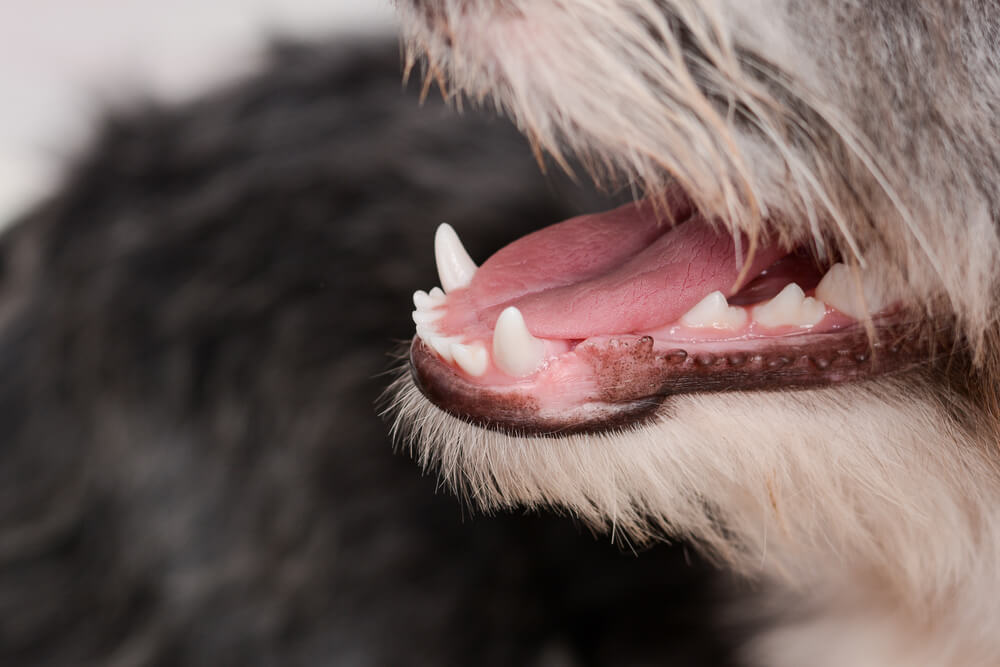
Why Are My Dog’s Gums Pale?
Pale gums in dogs can be a sign of several different serious health conditions.
Anything that causes pale gums in dogs should be considered an emergency and you should contact your vet, or out of hours your nearest Vet’s Now straight away.
What should I do about pale gums in dogs?
Any causes of pale gums in dogs could be potentially life-threatening or require urgent treatment, so it’s vital that you contact a vet for advice.
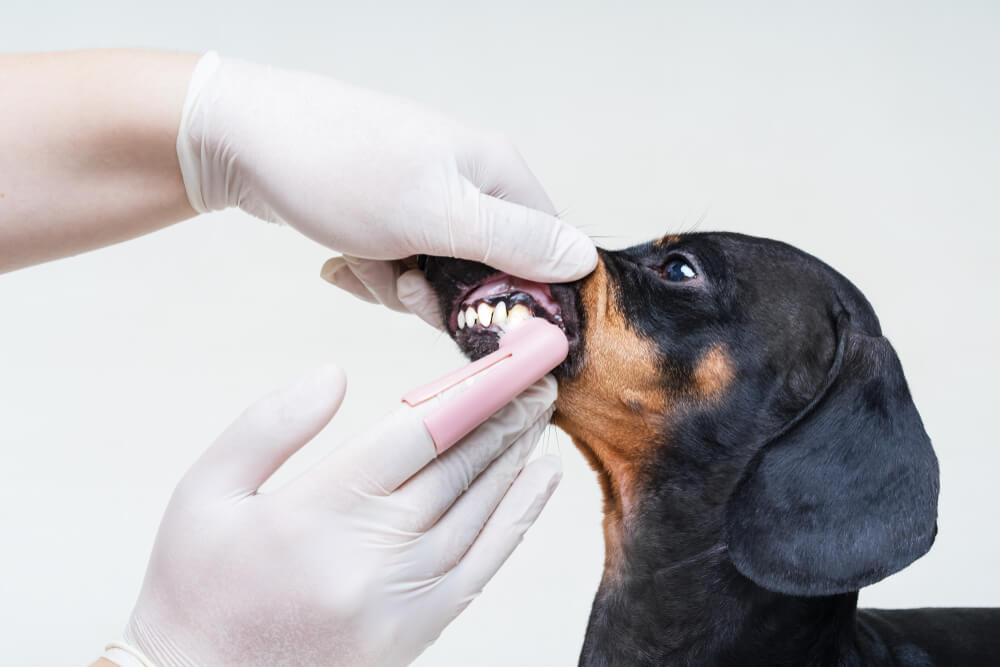
What Causes Pale Dog Gums?
There are many conditions in dogs that list pale gums as a symptom.
These include anemia, blood loss, shock, kidney disease, among many others.
Anemia
Anemia occurs when there’s a fall in the number of red blood cells which transport oxygen around the body.
In severe cases, this can lead to oxygen deprivation.
Pale pink or white gums are the most obvious and common clinical sign of anemia, with other signs including weakness, lethargy, poor appetite, and shortness of breath.
If left untreated, anemia can be fatal.
Blood loss
Blood loss can be due to a wide range of causes including trauma and a severe parasite infestation from fleas and ticks.
Blood loss could be life-threatening and should always be considered an emergency, so contact a vet immediately if your dog is suffering from blood loss.
Shock
Shock refers to a life-threatening condition due to a sudden drop in blood flow through the body.
Lack of blood flow means cells and organs don’t get enough oxygen and nutrients to function properly.
Shock can be caused by several different issues and is often seen with trauma such as car accidents.
If left untreated, shock can be fatal, so immediate veterinary treatment should be sought.
Kidney disease
The kidneys play a vital role in the functioning of the body and any condition which hinders the kidney’s function is known as kidney or renal disease.
There are many causes of kidney disease, including chemicals, toxic foods, and infections.
One of the many functions of the kidney is the production of a hormone called erythropoietin, which instructs the bone marrow to make red blood cells.
When the kidney is not working properly, its ability to produce erythropoietin is compromised and the number of red blood cells in the body drops.
Although symptoms can vary depending on the cause and severity of the kidney disease, pale gums (caused by anemia) are one of several possible symptoms.
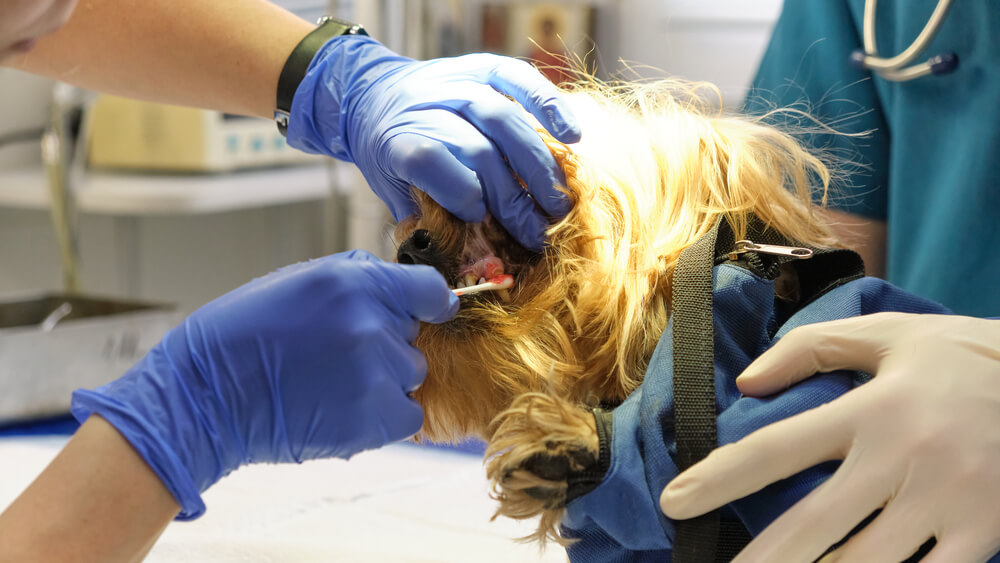
How Do I Check for Unhealthy Dog Gums?
As a responsible pet parent, you already know about closely monitoring your pet’s health and behavior so that you can detect when something’s not right.
Checking your dog’s gums should be included in this monitoring. Fortunately, this is easy to do and not at all uncomfortable for your dog.
- If it is safe to do so, lift the upper lip to observe the color of the gums just above the upper canine teeth
- Press firmly on your dog’s gums with your finger and then release to test how long it takes for the gum to return to its normal color (this should happen within 1 – 2 seconds)
- If you are unable to check their gums, examine the eyes instead of gently pulling the eyelid down and looking at the color of the tissue.
You can also perform the capillary refill test, which is a quick way to evaluate hydration status and blood flow to the gums.
Gently press your index finger to your dog’s gums and lift your finger back up.
The area you pressed will be white from your finger’s pressure, then return to the normal pink color in 1-2 seconds, indicating adequate hydration and a quick refill of the blood vessels.
If more than 1-2 seconds pass before your dog’s gums turn pink again, your dog may be dehydrated or have an underlying health problem that is affecting circulation.
Check your dog’s gums at least once or twice a month.
However, it’s best to check the gums each time that you brush your dog’s teeth, which should be a few times a week.
Take note of any change in the gum’s feel and appearance.
Be aware that, for dogs with mottled gums, it can be challenging to see the capillary refill test results and determine if the gums have changed color.
Pale gums in dogs range from pale pink to white.
Because pale gums are usually associated with a problem with hydration or circulation, the gums will probably feel sticky and lose their shiny appearance from a lack of moisture.
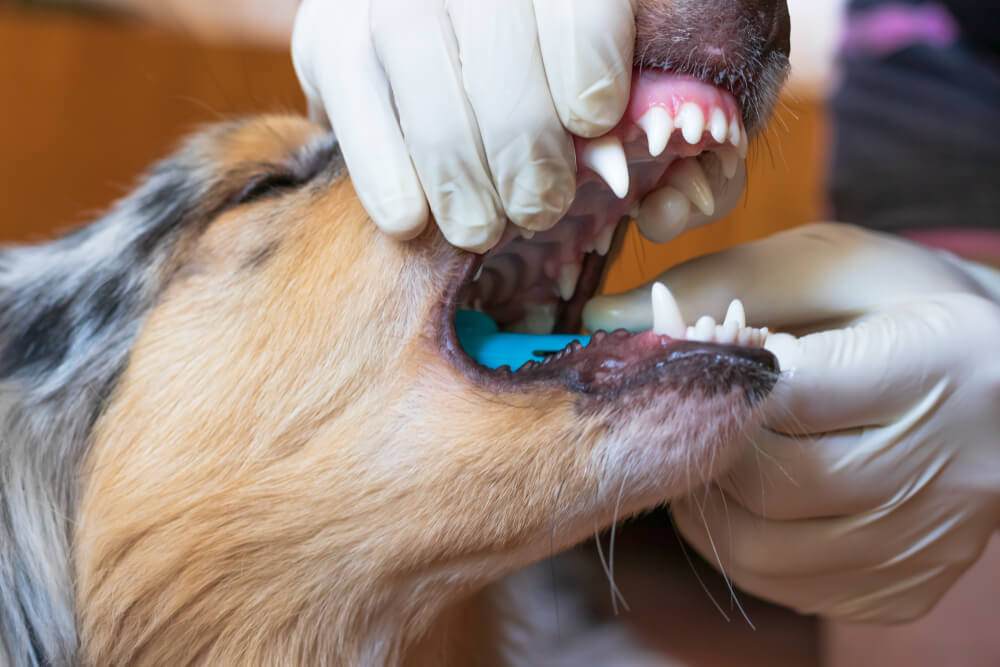
Dog Gum Color Chart
Use a dog gum color chart to get an idea of what might be causing pale gums or any other change in your dog’s gum color.
Remember that many of the causes are considered emergencies and your dog should receive treatment from a vet as quickly as possible.
| Gum color | Possible reasons |
| Pale | Anemia |
| Blood loss | |
| Pain | |
| Shock | |
| Anxiety | |
| Yellow | Liver problems |
| Red blood cell damage | |
| Blue or purple | Breathing problems |
| Pneumonia/asthma | |
| Choking | |
| Heart disease | |
| Hypothermia | |
| Low blood pressure | |
| Toxicity (poisoning) | |
| Cherry red | Carbon monoxide poisoning |
| Heat stroke | |
| High blood pressure | |
| Toxicity (poisoning) | |
| Shock |

Can I Prevent Pale Gums in Dogs?
Given the range of underlying causes which could have led to a change in your dog’s gum color, the methods of prevention vary, and in some cases, there’s no way to prevent it.
The best method is to take general steps to ensure your dog’s environment is as safe as possible keep toxic substances out of their reach, keep them away from sharp objects which could cause bleeding, and avoid situations where they could get hurt.
Carrying out routine checks of your dog’s gums will also ensure that any issues are identified quickly.



